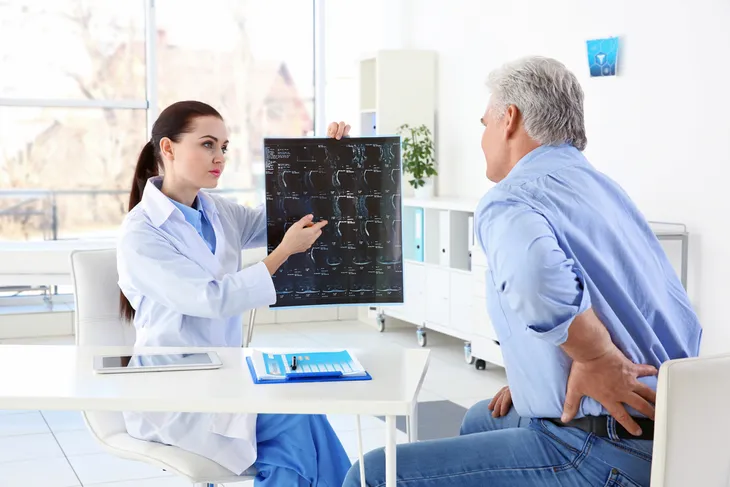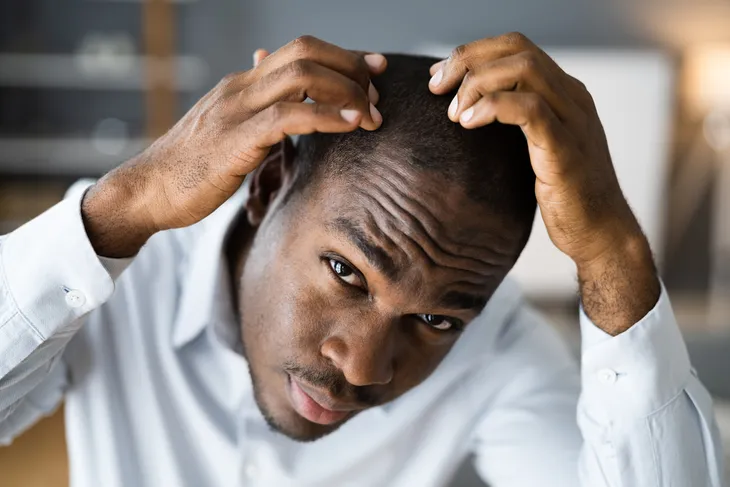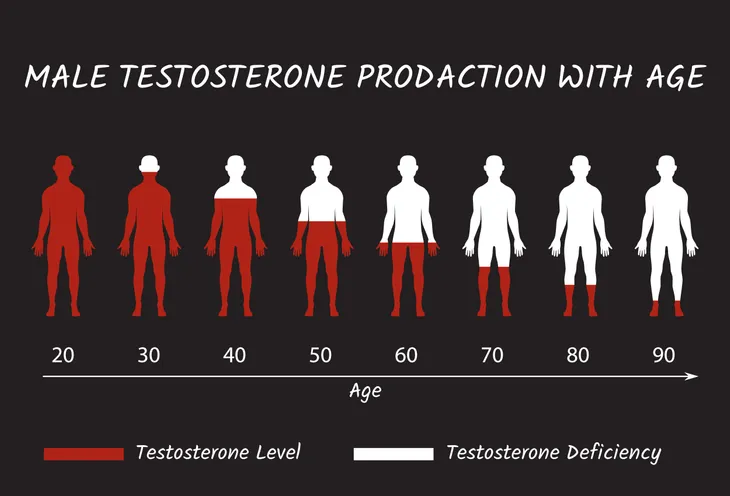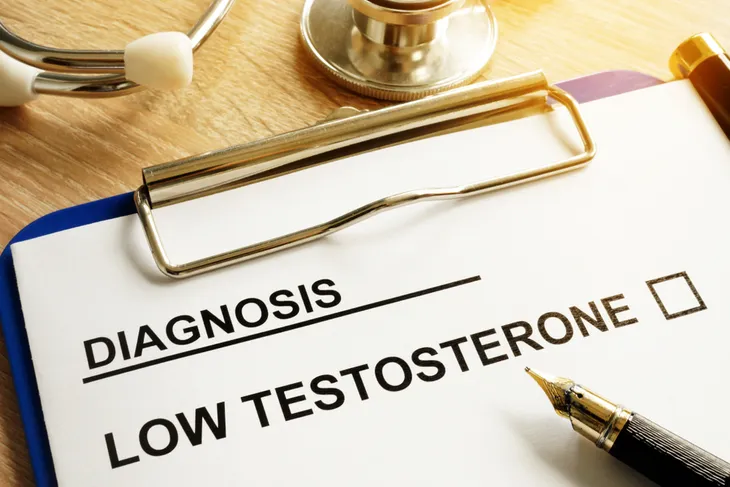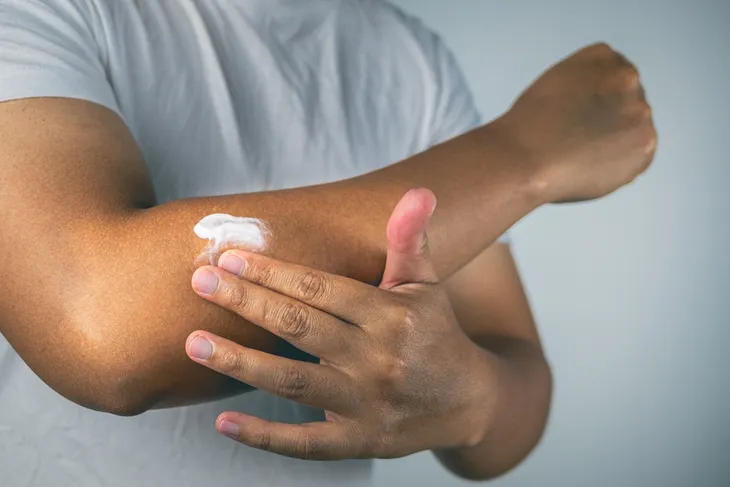- Testosterone is an important hormone that helps regulate libido, muscle mass and strength, red blood cell production, and fat distribution.
- Low testosterone affects roughly 40-percent of men ages 45 and older.
- There are a few key signs to watch for that may indicate you have low testosterone. Luckily, there are treatment options available.
Low testosterone, also known as male hypogonadism, is a condition that develops when you don’t produce enough testosterone. Testosterone plays an important role in developing bones and muscles as well as a variety of other important functions. When your body doesn’t produce enough, you’ll begin to develop noticeable symptoms.
Low testosterone levels are more common in older men, but it’s still important to get informed and understand the signs and symptoms so you can get the proper treatment you need. Here’s what you need to know about low testosterone in men!
Testosterone: What Is It and Why Is It Important?
Testosterone is a hormone that is found in both men and women, although men have significantly higher levels. This hormone plays a vital role in developing bones and muscles. It also deepens the voice, plays a role in hair and the production of sperm, notes Medical News Today.
“Testosterone production can slow as a person ages, and many older people experience symptoms of low testosterone,” explains the source. Keep reading to learn more about the warning signs of low testosterone.
Is Low Testosterone Common?
Low testosterone levels are more common in men than you might think. It affects roughly 40-percent of men ages 45 and older, says the Cleveland Clinic.
Urology Health says that men who are overweight or have diabetes may also have a higher risk. The source notes a study that found 30-percent of overweight men had low testosterone while 6.4-percent of men with a healthy weight had low levels. The source also says, “24.5% of men with diabetes had Low-T, compared to 12.6% of those without diabetes.” If you think you might be at risk for low testosterone levels, talk to your doctor.
Identifying the Warning Signs of Low Testosterone
Healthy levels of testosterone will vary greatly depending on several factors such as your thyroid function and protein status. It will also vary by age. According to the American Urology Association, normal levels for a man are about 300-nanograms (ng) per deciliter (dl) of blood. Any levels below are considered low testosterone.
So how do you know if you have low levels of testosterone? The warning signs can vary from man to man depending on how low the levels are but there are a few key signs to look out for. Let’s take a look at what they are next!
Loss of Muscle Mass and Increased Body Fat
Testosterone plays an important role in building muscle, explains Healthline. So when a man has low levels of testosterone they may notice a decrease in muscle mass. The source says that studies show “testosterone affects muscle mass, but not necessarily strength or function.”
In addition to lost muscle mass, men with low testosterone may also notice an increase in body fat. More specifically they may develop enlarged breast tissue, known as gynecomastia. This can occur because of an imbalance between testosterone and estrogen.
Decreased Bone Mass
Another warning sign of low testosterone is decreased bone mass, known as osteoporosis. This is because testosterone also plays a role in producing bone tissue and maintaining bone volume, says Medical News Today.
Brittle bones can lead to fractures and injuries. This is why it’s important to be on the lookout for signs and symptoms of osteoporosis in men to address the situation right away. The telling signs include difficulty staying active, weak or brittle fingernails, gum problems, and muscle pain and cramps.
Decrease in Energy Levels
If you notice a sudden drop in energy levels for no apparent reason, you might have low levels of testosterone. Men with low levels may feel fatigued even after getting enough rest, says Medical News Today. Another sign is showing a lack of interest in exercise or movement in general.
Your energy levels aren’t the only thing that can change. Low testosterone can also affect your mood and mental capacity. It can cause irritability, make it harder to focus, and may even cause depression. If you’re feeling tired for no reason and start noticing unusual mood changes, book an appointment with your doctor.
Other Possible Signs and Symptoms
Low levels of testosterone can also cause a variety of other symptoms in men such as hair loss. While balding can be a natural part of aging, especially in men, low testosterone can cause hair loss of the body and facial hair.
Healthline says low testosterone may also cause low blood counts and increase an individual’s risk for anemia. Finally, low levels of testosterone can greatly decrease libido. Be on the lookout for all these common signs of low testosterone and contact your doctor if they develop.
What Causes Low Testosterone in Men?
Testosterone naturally declines as a man ages. The Cleveland Clinic explains, “This natural decline starts after age 30 and continues (about 1% per year) throughout his life.” That said, there are a few other factors that may cause low testosterone.
Other potential causes include pubertal delay, severe primary hypothyroidism, injury or infection of the testes, chemotherapy for cancer, tumors of the pituitary gland, and certain medications. Obesity, acute or chronic illness, alcohol abuse, and estrogen excess may also be the cause of low testosterone.
When to See a Doctor
Although a decrease in testosterone levels is expected as men age, other more serious conditions could be the culprit of your low levels. This is why it’s always important to talk to your doctor if you suspect you have low testosterone.
To diagnose low levels, your doctor will likely begin with a physical exam and review your symptoms along with your medical history. For a proper diagnosis, your doctor will need to measure the amount of testosterone in your blood with a blood test.
Treatment
Once you’ve been diagnosed with low testosterone, your doctor will discuss treatment options. The most common treatment is testosterone replacement therapy (TRT).
TRT can be given in a variety of ways. One way is through testosterone patches which are meant to be worn daily and applied to different parts of the body, says the Cleveland Clinic. Another option is testosterone gel that is applied to clean, dry skin. Testosterone can also be given through injections.
Are There Side Effects?
As with most treatments, there are some possible side effects you should be aware of. For starters, it may cause oily skin or in some cases, acne. Mild fluid retention in the ankles, sleep apnea, and stimulation of the prostate are also possible side effects.
Cleveland Clinic also notes skin irritation is possible, specifically in patients who receive the topical testosterone gel. In some cases, a decrease in testicle size and breast enlargement or tenderness is also possible. This is why it’s important to attend regular follow-up appointments with your doctor.
Can Low Testosterone Be Prevented?
Unfortunately, there are “no known ways to prevent low testosterone that is caused by genetic conditions or damage to the testes or pituitary gland,” explains the Cleveland Clinic. That said, if your low levels are caused by other factors such as obesity, or alcohol abuse, you may be able to prevent it by adopting healthier lifestyle choices.
The source says weight management, regular exercise, a healthy diet, and avoiding excessive use of alcohol, may help maintain normal levels of testosterone. If you think you might be at risk for low testosterone, talk to your doctor to find out what you can do to help prevent it.





